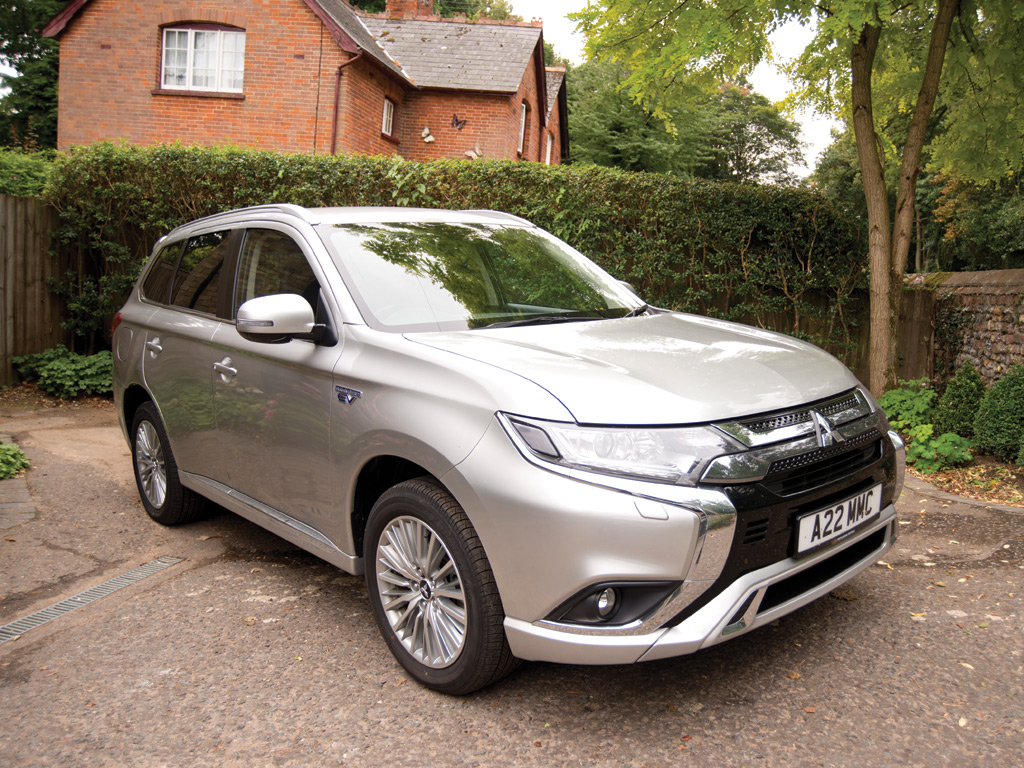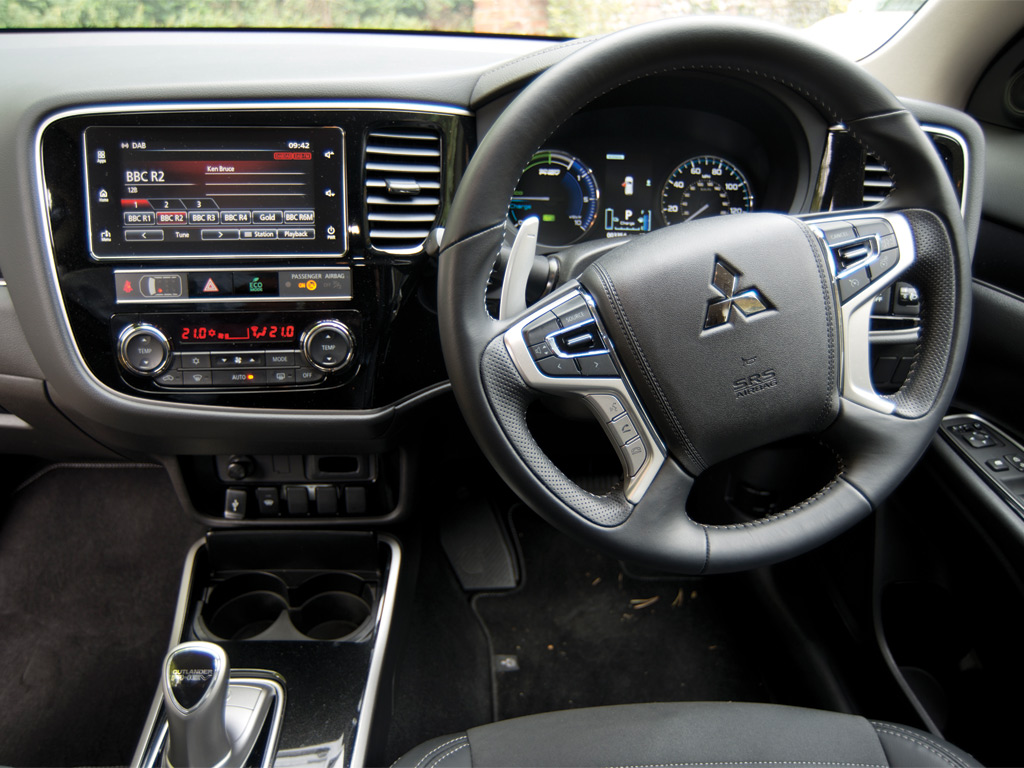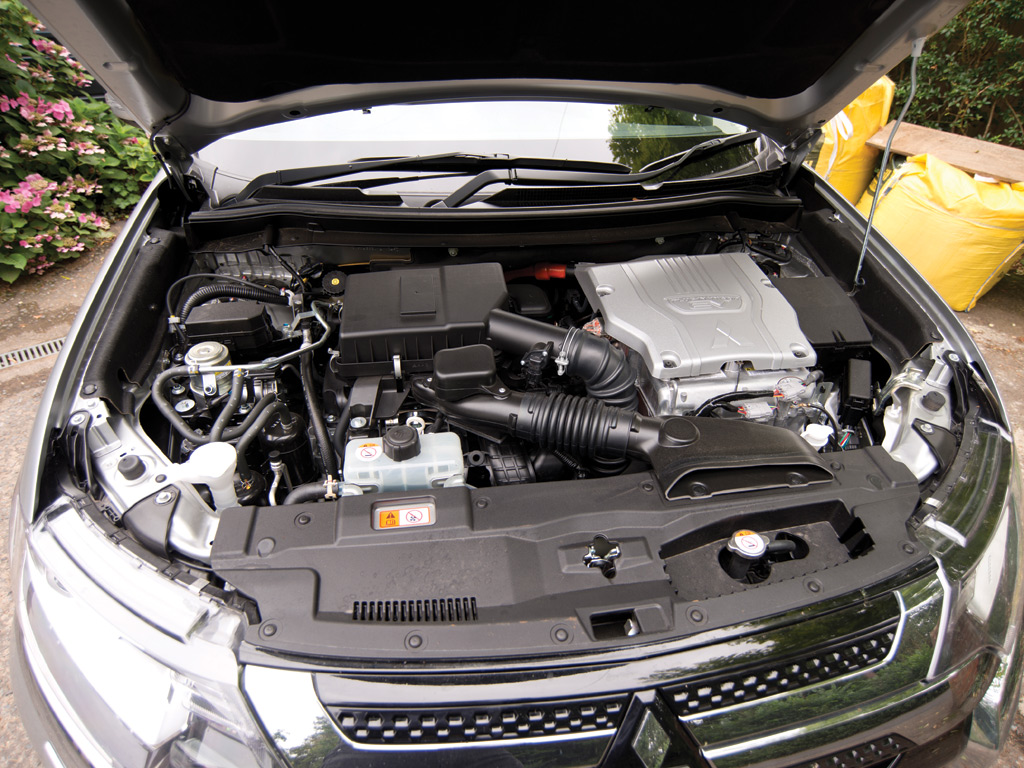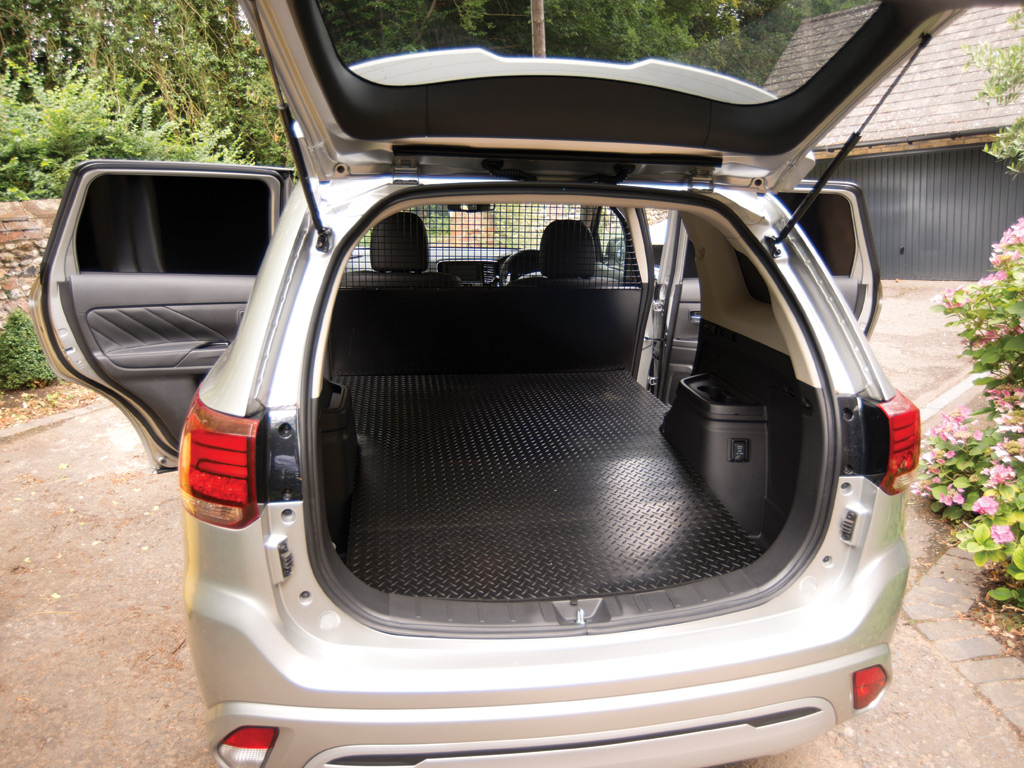The second-generation Outlander PHEV Commercial is a big step in the right direction, says Dan Gilkes.
Perhaps I am mellowing in my old age, or increased exposure to a range of electric vehicles has changed my perception, but there is no denying that Mitsubishi’s latest Outlander PHEV is a far better vehicle than its predecessor.
It may seem odd that a van that promises low emissions and minimal fuel consumption, should drop its 2.0-litre petrol engine in favour of a more powerful 2.4-litre unit. Yet, the resulting improvements in driveline efficiency and refinement are impressive.
The numbers are also compelling.
A full battery charge offers 28 miles of electric driving, while bringing the engine into play delivers an overall range of closer to 400 miles, removing anxiety. Of course, that depends on how you drive the vehicle, which is a given for any van, but the promise of almost 140mpg and a CO2 figure of just 40g/km is hard to resist.
By plugging in every evening, I managed to run the Outlander in local urban driving for three days without the engine ever starting. As an EV the Outlander is smooth and rapid, easily keeping pace with traffic.
When the engine does fire up, it’s up to you how you use the available sources of energy. You can opt to charge the battery while running, save the battery power for an urban environment or combine the two drivelines if you are in more of a hurry.
On a steady two-hour rural run, the mix of battery and petrol power provided an overall trip average of more than 110mpg, without really trying. That said, a morning commute to Silverstone, for the recent L200 launch, saw the figure fall to a still impressive 60mpg.
What is fascinating is the way that the Outlander’s driveline smoothly mixes and matches power sources, with little more than a faint change in noise levels to indicate the engine’s operation. Within a single journey, the driveline can operate as a full EV, in series hybrid mode with the engine acting as a generator, or in parallel hybrid mode with the engine assisting the electric motors.
Commercial vehicle drivers won’t be as concerned about the potential Benefit-in-Kind savings of the PHEV. However, companies entering low emission and Congestion Charge zones will welcome the reduction in tolls.
So does the PHEV work as a van? With a flat load platform and a steel and mesh bulkhead, it certainly offers an easily accessible load area. A payload of 510kg isn’t too bad, though few buyers will be looking to tow much, with a trailer limit of just 1.5-tonnes.
The cab is a well-equipped place to spend the day and the Outlander offers a comfortable driving environment. It will not suit every operation, but there are a growing number of companies looking to make savings and reductions in emissions, for whom the Mitsubishi could provide the ideal combination of talents.
The Verdict
A much improved driveline lifts the Outlander PHEV experience to a new level of efficiency, in the right operating conditions.
Rating: ****





